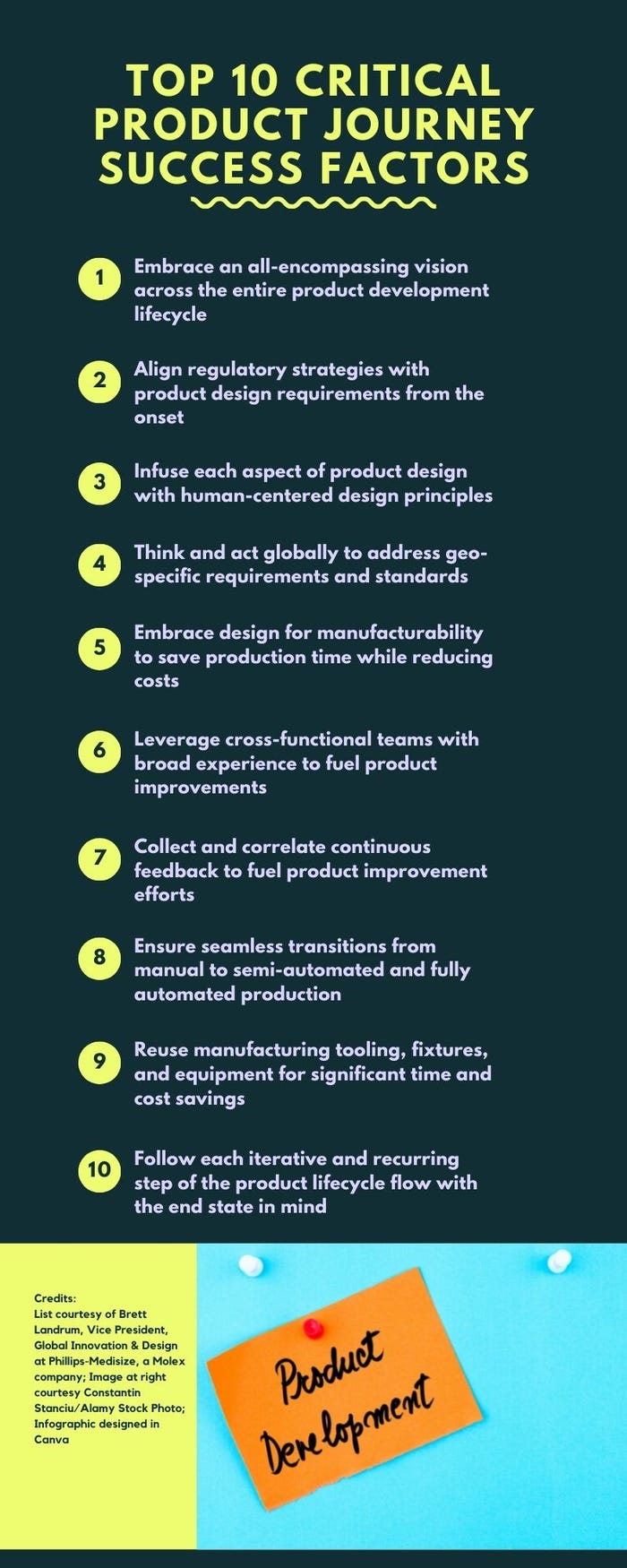Navigating the Novel Medical Device Journey
A look at one company’s path from medical device design to market delivery yields some interesting lessons, suggesting 10 critical factors for success.

The opportunity to bring a breakthrough medical device to market is both exhilarating and exhausting. Meticulous coordination of each product design and development step must be undertaken with an overarching focus on usability as well as a clear view of what is required by regulatory organizations. As a result, many aspects of the regulatory process go hand-in-hand with human-centered design, which places usability front-and-center in all product development decisions.
While putting the user first makes intuitive sense, it’s critical to apply this mindset and methodology from beginning to end—starting with the initial idea and extending throughout each product prototype, feasibility study, clinical trial, regulatory process, manufacturing ramp, and commercial delivery. For SOTECH Health, a Dallas-based game changer in screening mass populations for COVID-19, the path to product realization is being paved with seamless collaborations across the entire product development lifecycle.1
Start with the End Game in Mind
Anchored by a mission to return the world to levels of pre-pandemic normalcy, SOTECH Health developed a point-of-care diagnostic test intended to detect COVID-19 exposure quickly and accurately in densely populated settings, such as airports, businesses, cruise lines, schools, and stadiums. Unlike existing polymerase chain reaction (PCR) testing and rapid antigen testing, which take time to produce results, SOTECH wanted to screen for COVID-19 in less than 30 seconds.
To accomplish this, the test had to be simple, straightforward, and capable of being self-administered. Starting with this end state in mind, the company focused on a breath-sensor system that functions similarly to breathalyzers used to measure blood alcohol content. In this case, however, SOTECH’s novel device can detect certain compounds, called volatile organic compounds, which are emitted when the body is in distress. A highly sensitive, electrochemical sensor looks for traces of certain chemicals in the sample, which indicate exposure to SARS-CoV-2, the virus strain that causes COVID-19.
The ability to leverage unique sensing technology, developed by the University of Texas at Dallas, offered SOTECH a go-to-market advantage. Additionally, ongoing collaboration with UT-Dallas streamlined the identification of location, temperature, humidity, and communications sensors for collecting and sharing data using artificial intelligence (AI) models created by SOTECH to assess results and better understand emerging viral hotspots.
While the idea behind SOTECH’s innovation is as easy as taking a breath, myriad product design and usability factors added complexity to the development of both the reusable breath-sensor device and the accompanying disposable mouthpiece. As is the case with many novel devices, there aren’t a lot of existing predicates, if any, to inform product development. Instead, the application of human-centered design principles is key to determining product form, fit, and function by asking the following:
How well does this product meet a specific need?
Is the device easy to understand and interact with?
Is the device appealing to intended users?
Can the device be manufactured efficiently in commercial volumes?
Medtech device designers and developers need to parallel track everything from human-machine interfaces (HMI) and product functionality to regulatory, manufacturing, and commercialization. For instance, if there is an indication that a product will be launched in multiple regions, then factoring in geo-specific requirements and regulatory environments is crucial. Different design inputs, compliance standards, power requirements, and documentation are just a few of the areas that must be taken into consideration from the beginning.
Bringing in cross-functional teams with experience across a variety of disciplines is vital to validating an existing knowledge base while uncovering any areas of exposure as early in the development process as possible. Increasingly, this effort requires tapping the skills and expertise of experts across ever-widening areas, including industrial design, mechanical and electrical engineering, software, artificial intelligence, supply chain management, testing, and quality, the list goes on and on.
Align Regulatory and Medical Device Design Strategies
Successful medtech market entries typically are predicated on solid regulatory strategies that inform both product design requirements and development decisions. For that reason, due diligence is needed to ensure the business case has ample visibility into what is needed for regulatory backed by verified evidence and results.
As the intent for SOTECH Health’s device is for mass screenings, the team examined product use, starting with how someone would pick up and interact with the handheld device and disposable mouthpiece. In particular, the team wanted to assess if someone could insert the mouthpiece unassisted and then blow into the device for six seconds to produce an accurate result.
Continued testing and analysis play equally important roles in helping product developers gather and correlate a body of substantive evidence, including design history files and quality testing, all of which are required for regulatory review. For most developers of novel devices, the type and duration of feasibility, usability, and studies will vary greatly, depending on the device and its intent. Regardless, these initial steps are instrumental as specific product design choices can alleviate or aggravate certain regulatory challenges. Feedback from testing plays a major role in continuous product improvements as well as finalizing regulatory submissions and preparing for volume manufacturing.
Design for Manufacturability Accelerates Medical Device Commercialization
As soon as regulatory approval is granted, medtech companies must be prepared to mount an expedited and economical path to market. SOTECH Health is no exception, which is why the company adopted tenets of design for manufacturability from the beginning. Optimizing product designs for production is the best way to avoid unforeseen changes that can slow a product’s market trajectory or increase costs. Failures or delays in integrating design for manufacturability across the product development lifecycle often leads to decisions in materials or product features that adversely impact cost, quality, and time-to-market.
Another problem that can delay commercialization while adding unnecessary costs is insufficient understanding of how best to scale manufacturing to accommodate increased volumes. It’s imperative to apply all learnings from low-volume production during clinical trials and early market ramp up to transition production into semi-automated and then fully automated lines as demand dictates. The ability to make these transitions smoothly without the need for major modifications to tooling and fixtures is essential. The opportunity to reuse these essential manufacturing aids, including specific equipment on the production line, will pay off in significant time savings and reduced costs.
SOTECH Health anticipates a rapid production ramp upon receiving regulatory approval. To that end, Phillips-Medisize is readying access across its expanded global footprint, which includes world-class manufacturing facilities, innovation centers, and cleanrooms in North America, Europe, Asia, India and Mexico. Additionally, the team is prepared to leverage a combination of manual and fully automated production lines to manufacture large quantities of handheld devices and mouthpieces daily.
Moreover, both companies already are looking on the horizon for ways to adapt SOTECH’s unique platform to screen for other respiratory diseases and conditions in the future. Following each step involves looking ahead without ever losing sight of the product’s vision or SOTECH Health’s transformative mission to change the world through the power of innovation.
For a list of top 10 critical product journey success factors, please see the infographic below.

Author's Note
1. The SOTECH product has not been cleared by the U.S. FDA or comparable regulatory bodies in other jurisdictions. The product is subject to emergency use authorizations given the COVID-19 pandemic. This article is not intended to make any affirmative statements about the safety, adequacy or effectiveness of the SOTECH product.
About the Author(s)
You May Also Like



.png?width=300&auto=webp&quality=80&disable=upscale)
